
East Africa’s first music technology summit, Kilele, brought together artists and industry figures from Kenya and across Africa and Europe for a series of boundary-pushing performances, discussions and collaborations. Martin Guttridge-Hewitt reports on how the event and a bubbling local underground are ushering in a new era for Nairobi’s electronic music scene
Exiting your car on the inside lane is never good. But when our taxi is rear-ended amid the mayhem of Nairobi’s Waiyaki Way, we get asked to leave, putting slow but heavy traffic and few road markings between us and the curb. “Westlands Mall is just down there,” the wheelman points as we make an uncoordinated dash for it. The Kenyan capital is a stifling 30°C today, and most foreigners who arrived last night are en route to safari, far from this chaotic carriageway. Instead, DJ Mag’s destination is one of the oldest shopping centres in town, where key players from the local electronic music scene and visiting guests are gathered for East Africa’s first symposium on sound technology.
Dubbed Kilele, it spans a week, with the mall’s cool basement hosting daytime sessions. A combination of open-minded management and empty units has nurtured a creative cluster down here — studios, a venue, more. Lunchtimes and sunsets move to the rooftop car park, where DJs serve drum & bass, refined grooves, hip-hop, and ambient.
Attendees get acquainted over cold Tusker lager, stewed meats, veggies, rice, and views across a city of 4.4 million, riding between floors in elevators soundtracked by local coding artists, BYTE Collective, or the aptly-titled field recordings, Sounds of Nairobi. Both remind us that rhythms are everywhere in town.
Nights take different forms. London’s Houseology boss Funk Butcher spins soulful but solid beats at outdoor BBQ spot Moov. There’s a mind-melting 45-minute A/V show by Kenya-based Ugandan Sharon Onyango-Obbo in the mall’s pitch-black Slaughterhouse space, and Philip Charo’s band Khonjo Kolio perform a condensed version of zaire — a hypnotic, immersive coastal dance he co-created; concerts usually last well over six hours.
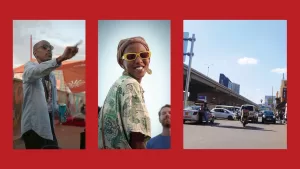
Overall, around 1,000 attend gigs, while workshops and panels pull roughly 200. Names like Nairobi hip-hop legend MR. LU* dissect productions and share secrets; conversations feel thoughtful yet urgent. The sadly defunct Mibwana Radio Service explains why digitising 5,000 cassettes of the taraab genre is essential. SampleBar Kenya presents cases for an open-access library of indigenous instruments aimed at inspiring new producers. A breakfast listening session explores Egyptian hero Halim El-Dabh, who made some of the world’s earliest electronic pieces and developed musique concréte, yet rarely features in histories.
Typically for any music meet, lack of money is a massive theme, and is particularly significant here. Just under 8% of Kenyans live in extreme poverty, and endemic corruption is just one colonial legacy stalking a country where average monthly pay in 2022 was 20,123 shillings (£120). Many structures are rooted in British rule, which ended in 1963. Criminalisation of ‘homosexual activities’ is one of several examples, as are patriarchal systems that fuel misogyny, resulting in the murders of more than 500 women in femicide killings since 2016.
Hardline regimes since independence — including 24 years under Daniel arap Moi, until 2002 — failed to address, and often exacerbated, ingrained problems. Culture-wise, foreign organisations are vital for funding. Nevertheless, at Kilele, representatives of those bodies agree on the need for domestic ownership within music. Changing perceptions that ‘sub-Saharan Africa’ is a single definable region is another recurring topic, with many considering this vital to improving the representation of and agency for the hundreds of individual cultures calling this corner of the world home. Unsurprising, given that Kenya’s population alone has over 70 recognised ethnicities.
Amongst all that, we meet with KMRU one afternoon. A modern Kenyan icon, he’s worked with CTM, Unsound, and GAMMA festivals, releasing ambient music and sound art on labels such as Editions Mego and Warp Records. Having lived in Berlin while KMRU was studying for a Masters, he now splits time between Germany and Nairobi. In soft tones, over ginger chai, he suggests change is in the air here, with grassroots music communities becoming more visible, confident and organised.
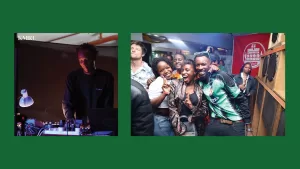
“We just wanted to start workshops, show people you can make music with this tool. It became such a thing people were looking forward to coming on a Saturday and being creative.” – KMRU
“Before I left the city there wasn’t what you see happening here, more a handful of people sharing ideas and thoughts. Sometimes it felt like we had to do more,” he tells us. “I began the Nairobi Ableton User Group with my friend [fellow producer Mbogua Mbugua Mbugua, AKA M3]. We just wanted to start workshops, show people you can make music with this tool. It became such a thing people were looking forward to coming on a Saturday and being creative. We had topics — today we’re gonna learn about this MIDI interface, or audio, making beats, something like this — then jam sessions in the evening.
“I think this was 2018 or 2019,” he continues, outlining how they approached Ableton with a plan and received software licences as support. Fifteen people came to the first meeting. “I remember there was a point where it reached almost 40 people, and we really just had a living room. It wasn’t too packed, but busy. It was nice to see it grow, people just showing up, even mainstream musicians… Then Covid hit and we didn’t have a space, so we tried workshops without meeting. Even then you could feel something happening.”
Some of that work eventually led to ‘INSHA’, a 14-track vinyl spanning lush instrumentals and beautiful voices (Nabalayo’s ‘Mtwapa Siren’), textured street recordings with floating melodies (Barno’s ‘Calm, Chaos’), and stripped, lo-fi club futurism (Munyasya’s ‘BORROWED CADENCES’). Some deal with 20th-century history, like Nyokabi Kariũki’s ‘Anjiru’, a 1953 news report about a visit from Queen Elizabeth II turned haunting ethereal vocal.
“The business side of things is what people miss a lot here. We can all be creatives, there are so many DJs. But people are not releasing so much music in Nairobi. That’s how I feel. People just want to play [music]. I know friends will have tonnes of albums, which are good. I’m like, ‘Share’,” KMRU explains. “Institutional funding is a big problem, not so many artists are knowledgeable about this side of things. In Kenya, generally, there’s no funding or the state doesn’t offer it. Even royalty-wise it’s not good. Most artists, my friends, registered outside the country [for royalties] because it’s organised — you can at least get something from it.”
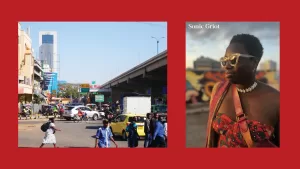
“There’s a crop of young folks building stuff now who are like, ‘I want to hear this music’, so they’re having parties. I’d say the scene feels much more vibrant, and there are all these musicians doing different types of things.” – Sonic Griot, Nairobi-based DJ and creative
The following evening, KMRU’s captivating live set produces new depths of low-end from a dubwise rig built by locals, Umojah Sound System. Earth-shaking drones and harmonic refrains reverberate around the concrete rooftop of Westlands Mall at sundown. Kilele’s biggest showcase, it also involves infallible Kenyan-Ugandan MC Yallah, who brings uncompromising grimy hip-hop, trap, electronics and industrial noise.
A tough act to follow, DJ and creative Sonic Griot’s uptempo, occasionally slamming, always groove-laden and drummy house, garage and stepping breaks keeps the octane high. Now in her late 30s, she came to Nairobi aged two, had a pan-African upbringing, and divides current commitments between co-running Toronto’s Afrique Like Me parties, touring, and Kenya’s capital.
“I think there’s a bigger DIY alternative and underground scene here now… When I was growing up, there was a different political environment. That has definitely changed over the years,” she replies when asked if developments in government have made much difference. “There’s more physical space for this to exist in, but I think there’s also more metaphorical space for people to just make music. It doesn’t have to be political. It doesn’t have to be angry. It can just be vibes.
“In the past, if you wanted to listen to, say, house music, there was maybe one party. If you wanted alternative music, like jungle, you had to play it at home. There’s a crop of young folks building stuff now who are like, ‘I want to hear this music’, so they’re having parties. I’d say the scene feels much more vibrant, and there are all these musicians doing different types of things. There’s definitely been a groundswell,” Griot continues, before emphasising prevailing issues, including a historic lack of Kenyan music exports. “It’s [also] relatively common to see all-men line-ups — sometimes that’s six or seven DJs on the line-up, and a single woman, who’s opening.”
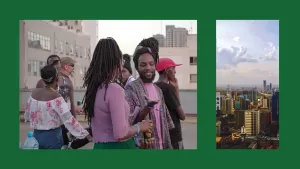
Kilele’s FEMX panel is encouragingly busy, with Griot, colleagues and audience members discussing how to make more room for women in music, including the ‘hidden’ roles those speaking work in: producer, engineer, promoter. Running a venue is another for that list, making Alexa Orsi, managing director at Shelter, an exception. We discover this go-to spot for non-commercial sounds hiding up an anonymous staircase on Electric Avenue, Nairobi’s nightlife epicentre, moments from Westlands Mall. Techno monthly Temple has used the top floor of the club for 10 years, and in around 2020 an opportunity to develop the middle storey caught her partner’s eye.
Since taking over, that level now encompasses a long bar, smoking balcony, and intimate dancefloor with large windows overlooking the street, where a woman called Margaret feeds hungry hedonists with “the best smokie in town” — a Kenyan-style hotdog well-worth sampling — from her cart. Back upstairs, the four-to-the-floor rhythms that put this address on the map remain, but the busy calendar also includes popular Amen-centric throwdown Jungle Culture.
“There are not enough places in Nairobi… But electronic music in all its genres is expanding. There’s a fusion with contemporary Kenyan music. It’s really grown over the last 10 years,” says Orsi, offering Gondwana — arguably the city’s biggest dance music party, usually held at Emara Ole-Sereni Hotel — as one example. Meanwhile, homegrown genres include dancehall-hip-hop fusions, gengetone and urbantone, and trap derivatives using an ever-evolving Swahili-English slang, sheng. “Shelter, at least for me, for the last year, has really promoted local artists in all electronic styles.
“Low incomes in the city aren’t an immediate problem; people into electronic music are usually a different demographic, and if they don’t earn much, ticket prices aren’t huge,” Orsi continues. Shelter is often free, or entry is usually 500 to 1,000 shillings (£3-£6). “But we can’t just operate on the electronic scene. It has to be wider. For me the challenge is being a club open Friday and Saturday only. It’s hard balancing our expenses. We’ve been OK, we will be OK, but a major thing is to have different programming. From techno to jungle, but also chillout sessions, experimentations, live concerts, acoustic. A more rounded inclusion of Kenyan music.”
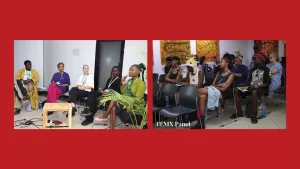
“In five years [the scene] has definitely matured, but I think we are still very much in an early phase. It’s a long journey. You could say now we’re not at square one, we’re in square two.” – Willie Gichala
A few doors down we meet Willie Gichala in the cosily lit Havana Bar & Restaurante. Right of the entrance, another set of steps leads to an LCD screen, then into MUZE. In 2021, the space became the first African venue to place in DJ Mag’s Top 100 Clubs poll since 2015, and it’s charted ever since. Extensive work transformed this Funktion One-powered, 400-capacity club, cocktail bar and media studio into a hi-tech playground, though some aspects remain untouched. A “wall of fame” has posters of landmark past events, resident DJs and guests, which have included Black Coffee, Archie Hamilton, Fred P, and DJ Buhle. The music policy is predominantly deep tech and house, although this varies. Bookings lean towards Africa and its diaspora. Operating seasonally, avoiding peak Kenyan summer, the team also run larger open-air sessions on the Westlands Mall rooftop.
“This is our second location, we weren’t supposed to be where we are… These buildings have been home to all of the electronic clubs in Nairobi. There used to be one called Bacchus and another, Taboo, owned by the same guy. I thought I was gonna take over the Taboo space, but I got to the building and an Ethiopian restaurant, Dass, just closed. I walked into the space and thought, ‘This is it’,” Gichala recounts. “The landlord had seen me in another venue, so it was much easier when we finally came to the location we wanted, here on Electric Avenue.”
Over nachos and White Cap lager we hear about MUZE’s opening, five years ago, and second night, when it was “tattooed” with stickers. Another 2019 date, headlined by live/DJ act Black Motion with Nairobi legend Blinky Bill, was “pandemonium”. The bar ran dry three times during the marathon, resupplies sourced from wherever, green room turning to Uber Eats. Now firmly established in a city that “loves new places”, the club’s pull has remained consistent, sessions running clean into the morning.
“When the current landlord visited the first MUZE he had no idea what was happening. I had to explain the whole thing. Weeks, a month after, he was still talking about how it had no seats. We now have 15,” Gichala half-jokes, highlighting common misconceptions about electronic music clubs in the city. “In five years [the scene] has definitely matured, but I think we are still very much in an early phase. It’s a long journey. You could say now we’re not at square one, we’re in square two. It looks good, but nowhere close to other places. I think you can describe Nairobi as promising, to be established I think will take maybe another five or 10 years. I’m curious to see whether that’s gonna happen.”
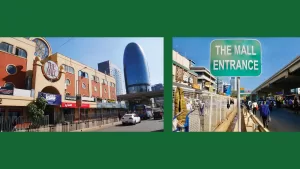
Another hair-raising cab across town brings us to Nairobi’s middle-class Karen neighbourhood to meet Shishi Wanj. Journalist, DJ, curator and scriptwriter, she recounts involvement in a scene dubbed ‘Nu Nairobi’. A loose gathering of friends where ideas were exchanged, during the mid-’10s it evolved into a music, art and fashion community, peaking towards the end of the decade. Often running free club nights and events, participation was encouraged, skills developed, faith grew. Today, she sees this as contributing to a process of “rewiring Nairobi” for a fresh era of creativity.
“At least in my life cycle, the very first wave of electronic music was just events, bringing in big artists, but people didn’t really interact with the music outside of dancing,” Wanj explains. “During that Nu Nairobi phase, no one really knew what they were doing. We’re all just in uni and thinking, ‘I don’t want to do a 9-to-5. I like music. I like art. What can we do?’ It really fostered some of the younger kids who have started to do things now. I really believe if we did not do what we did, some wouldn’t have the space now. “If people don’t see other people doing something, they’re not gonna do it. So I’d say by virtue of us really building a community, this happened. And we’re still close, some went to do film, some music, I even dabbled in music a bit, because we were in such an experimental phase,” she continues. “We had nothing to lose; ‘Let’s just try some shit’. Then it’s like, ‘Oh, people actually like this kind of shit.’”
The now-defunct Creatives Garage was Nu Nairobi’s home, followed by The Alchemist, a venue that comes up in several conversations. Today Wanj says The MIST, back in the basement of Westlands Mall, is where underground and experimental music thrives.
First impressions fit; all-standing bar feeds small alcoved dancefloor, arches keep sound focused and heavy, opening to a back area plucked from a squat-rave dream. Floral murals and graffiti, coloured lights, surreal wall-hangings and one newspaper cutting about Kenyan hip-hop heritage set the mood for two of Kilele’s crowning moments: Afrorack and Feldermelder’s live modular IDM blows away any cobwebs from the darkened corners, and later in the week, Mizizi Ensemble place equipment throughout the club’s distinct areas, creating a unique concert-as-theatre in-the-round experience. Wearable controllers allow performers to make sound with their body movements, while across the room, un-amplified vocals mesmerise against deafening quiet. Behind us, a plastic chair might have been used for percussion. A synth refrain fills the air.
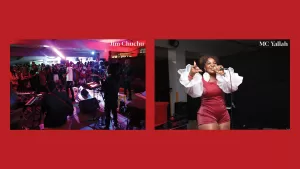
“Our involvement should not be perceived as this European event coming to Kenya. It’s grown out of projects we’ve been running for a decade. Trust has been built in that time, allowing us to get to the point where we can establish a platform…” – David Tinning, director of Santuri East Africa
The Ensemble’s roots lie in member Alex Hofmann’s Études for Live-Electronics project and work at the University of Music and Performing Arts, Vienna. In Mizizi, he’s joined by another European interdisciplinary creator, Bernt Isak Wærstad. In 2023 they delivered a workshop here alongside musician and singer Labdi Ommes. Two more Kenyan artists joined after, BYTE Collective’s [M] and Nyokabi Kariũki, forming a quintet and catalysing the idea of performing as part of an extended interactive music forum.
Around that time, UK-born, Nairobi-based David Tinning was having similar thoughts. He’s director of Santuri East Africa, a 10-year-old DJ and music academy that’s critical to the Westlands Mall cultural landscape, and which marked its decade anniversary with the Yallah and KMRU showcase. Hundreds attend courses through its SEMA school and there have been more than 500 events platforming its best talent. A quarter of graduates now make at least 50% of their income from performance of some kind. “Death stares” from lecturers during a hands-on presentation at one of Kenya’s austere universities convinced Tinning a larger, accessible summit-style event was needed. Alongside Hofmann, he and Wærstad began pondering what that looked like.
We find the latter two men in Habesha, a pretty garden-set Ethiopian restaurant, on the evening of our flight home. Between handfuls of curry and injera bread, they explain that Kilele started with a programming committee, which included Kariũki and [M]. Then there was an open call for proposals from the community, before real planning began six months ago. Final contracts — including some financing — were signed the day we landed.
“Some of the ideas came out of things we’ve been thinking about for a long time — we’ve done so many workshops, made so many connections since Santuri began,” says Tinning. “Particularly over the last few years, it has really grown as a community. And that sense of ownership, not just with staff, but also the alumni, has become so strong. [Our] involvement should not be perceived as this European event coming to Kenya. It’s grown out of projects we’ve been running for a decade. Trust has been built in that time, allowing us to get to the point where we can establish a platform. So it’s rightly viewed as a collaborative thing.
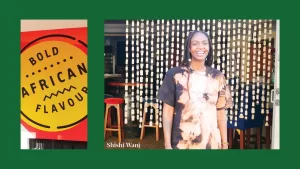
“From my side, Kilele was about opening channels for East African artists to travel to festivals and platforms and be engaged with the global music scene,” he continues. “I always found that with our partners in Europe, music tech or festivals, I could talk until I was blue in the face about how amazing an artist is, but they need to come and witness them in Nairobi, in their environment, to understand. Every showcase did that for every guest.”
“It’s not just coming in and telling people what to do. We’ve both been on the ground working and engaging here for a long time. And then there’s also this fact that we were lucky enough to have access to European funding, and maybe someone local would not,” says Wærstad. “As much as it’s something of course you check yourself on, and see the potential problematic side, it’s also a case of: I have access to these Euros, let’s use them for good… The main goal, for me, was exchange. Collaboration is at the core of it.”
Pricing and organisation plays a big part in achieving the goal. Full access to workshops and panels is 500 shillings (£3), facilitating broad attendance. Heads range from teenage fans and hopefuls, to Godfrey Kilimwomeshi. He just arrived in Nairobi — Africa’s second tech hub — to open an office for Jibu Music, his digital distribution, promotion, and monetisation platform specifically for African artists. Elsewhere, we meet regional culture writers, mental health practitioners, drummers, filmmakers and more. Ideas flow freely.
Most international faces — European festival bookers, project leads, performers and speakers — arrived self-funded, budgets prioritised for where they were needed most, including Santuri staff. Former students are also on hand, like David Kabaka Mungai, one of many talented graduates, whose enthusiasm is only equalled by a supply of local creatives to connect us with. Everyone puts in shifts betraying their impassioned commitment to contributing. The attitude is contagious. Performances shine, many unforgettably innovative and undeniably captivating, but the sense that so many people in this loud city are primed to make noise is what really resonates.
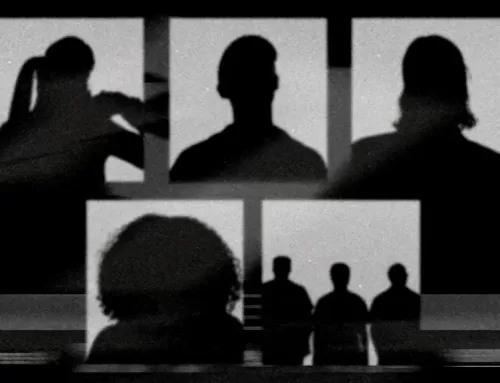

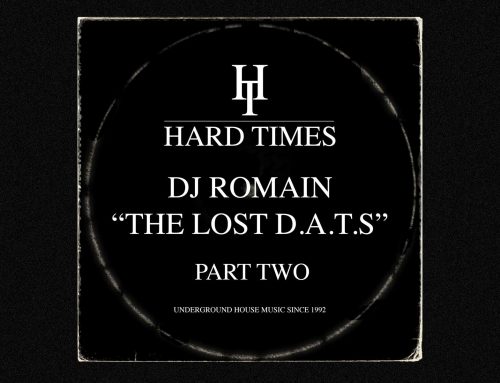

![Carl Cox says his Ibiza residency at [UNVRS] will be a “whole new world” (DJ Mag)](https://www.myhouseradio.fm/wp-content/uploads/2025/04/carl-cox-1.jpg-500x383.webp)
Leave A Comment
You must be logged in to post a comment.